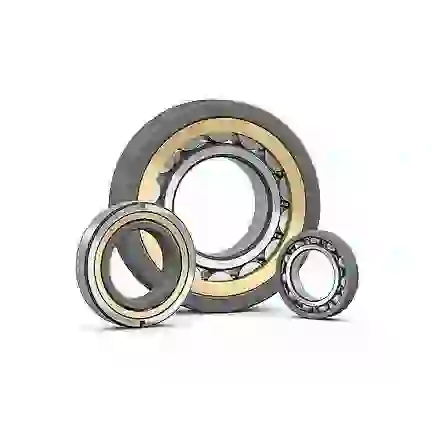INSULATED BEARING
Get Fastest Delivery / Get Best In Market Rates / 43+ Years Of Experience
Electrically insulated bearings typically have an aluminum oxide-coated outer ring OD face and end faces. Insulated bearings with a coated inner ring bore and end face, these bearings offer increased protection against high frequency currents due to the smaller coated surface area of the inner ring than the outer ring. Insulated bearings prevent premature bearing failures eventually caused by stray electrical currents. Insulation properties must remain stable regardless of environmental conditions, in particular when bearings are stored, handled and operated in humid climates. Bearing damage can occur when electrical currents use the rolling contact as a conducting path. Today, a number of publications are available that deal with this matter, including discussions about root cause and counteractions, for example [1, 2, 3, 4].The tribological regime of a bearing determines the electrical behaviour of the rolling contact and the possible outcome. In the conductive state the bearing is at a standstill and shows a low ohmic resistance. Due to the relatively good metal-to-metal electrical contact, only very high amperage currents such as welding currents are able to destroy the raceway surface. The resistive state is present if the bearing is in a mixed lubrication regime with increased ohmic resistance. In this regime, low electrical currents in the range of a few amperes have the potential to be dangerous. In the capacitive state the bearing is in a full film lubrication regime, and it acts like an electric capacitor with a specific breakdown voltage. If the applied electric field strength present in the lubrication film of the contact zone is high enough (in excess of the threshold value) electric discharges, called EDM (electric discharge machining) currents, will occur.
Balaji Bearings, an established Insulated Bearing Manufacturer and Exporter in India, supplies a complete range of high-quality insulated bearings. With a strong presence in Mumbai, Pune, Kolkata, and Chennai, we serve diverse industries across India. Our vast stock ensures easy availability, minimizes downtime, and improves operational efficiency for our clients.

Features Of Insulated Bearings
- Electrical Insulation: A thin non-conductive ceramic or oxide coating prevents the passage of electrical currents, protecting equipment from electrical erosion.
- Corrosion Resistance: The insulating layer also provides enhanced corrosion resistance, extending service life across varied environments.
- Standard Dimensions: Produced with the same dimensions as standard bearings, they can be installed without design modifications.
- High Reliability: By preventing electrical erosion, insulated bearings significantly increase machinery uptime and reduce maintenance costs.
Applications of Insulated Bearings
- Electric Motors & Generators: Widely used to safeguard motors driven by frequency converters from electrical erosion, thereby extending service life.
- Railway Systems: Essential in traction motors and railway applications, providing protection against stray electrical currents.
- Wind Turbines: Used in generators to withstand high speeds and electrical stresses, ensuring durability in renewable energy systems.
- Pumps & Fans: Provide reliable performance in electric motor-driven pumps and fans, preventing unexpected failures in industrial operations.
 Balaji Bearing Co.
Balaji Bearing Co.